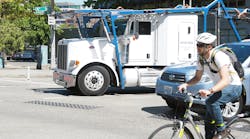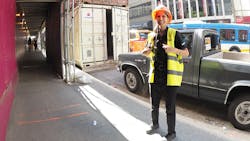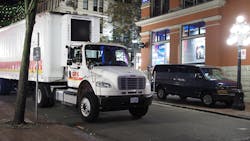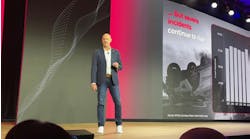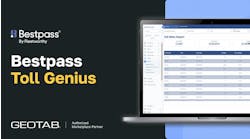While there are many ways to take commercial route planning and scheduling to another level by adding in data and real-time feedback from drivers and trucks, there's something else going on with advanced systems that can go beyond what fleets can do themselves. The software can "learn" things on its own.
Fleet management systems provider Omnitracs uses a routing algorithm that employs machine learning and other types of artificial intelligence to optimize trucks' routes. "One example is a tool within our routing application which allows customers to easily update their planned delivery service time duration based on actual information from the stops," explained David Palle, vice president of product management at the company.
The system also uses historical traffic data specific to day of the week and time of day to predict more accurately the time a driver will need to get from one stop to the next. Other tools Omnitracs has developed can monitor and analyze service patterns to recommend an optimal service frequency for a given customer, Palle noted, or compile a truck's latitude and longitude coordinates during particular stops to produce more accurate geocodes used for planning.
Just as a driver can provide feedback about service stops or roads taken on a route, the Service Time Updater feature in Omnitracs' Roadnet Anywhere platform can examine service at a particular stop over time. It allows fleets to account for delays such as waiting at loading docks or elevators and budget more accurately for service time requirements with changes in delivery volume.
That information is fed into an "evolutionary genetic algorithm"—a form of artificial intelligence that's changing over time with the data it receives from a fleet's experiences, Palle said.
"It can determine the optimal stop assignment across multiple routes, the most efficient and effective order to sequence those stops within a route—minimizing mileage and drive time, while still meeting customer delivery windows—and the best time to start the route that specific day, auto-adjusting the start time if a company desires," he explained.
A fleet dispatcher or planner can optimize routes in many ways, including taking into account feedback from drivers, physical information on roads to customer locations and stops, and data that the back office is sent from trucks. But that can mean time-consuming work and sifting through lots of data, and today, routing and planning systems are taking the next steps and making many of those calculations and adjustments themselves.
The result is routing and optimization that incorporates a good deal more information than would otherwise be possible, certainly compared to manual processes. And this next-level routing and planning can help root out some old gremlins in transportation and distribution.
Drivers can be notified of places to refuel along their routes that are the least out of their way and best rated, for example, or where they can rest, eat, or park safely, Palle noted. Dispatch algorithms can continuously monitor delays and re-optimize stop sequencing as needed to meet customer delivery windows and reduce late deliveries as much as possible.
Physical limits & innovations going forward
Even with the data finessing that today's commercial routing and planning technology is capable of, there are still physical limits to infrastructure. If e-commerce growth continues and package deliveries were to double in five years from what they are now, as the University of Washington's Supply Chain Transportation and Logistics Center has noted, and population shifts, vehicle travel, and other roadway traffic contributors continue, is there a point where no technology can get your trucks through?
The short answer is yes. And that's why, along with many others, the center is studying ways to innovate supply and distribution chains—including last-mile and even "final 50 ft." delivery—in hopes of getting around the roadblocks sure to come.
One thing has become obvious: There's a lot of repetition in competition. That is, delivery companies like the U.S. Postal Service, UPS, FedEx, and even Amazon are often sending trucks to the same locations every day to accomplish similar tasks.
It's fostering greater collaboration among these rivals with things like consolidated delivery points. Goodchild, director of the Supply Chain Transportation and Logistics Center, noted that some locations such as college campuses can consolidate deliveries and thereby reduce truck traffic within a given location.
That's effectively how London's Regent Street, a major, high-end shopping area and tourist destination, helped tame delivery traffic. It's unusual in that the real estate is all owned by the Royal Family, but pedestrian and vehicle traffic there had gotten out of control, making for a less pleasant experience and even reducing stores' earnings potential.
The location now has a consolidated retail center that was designed by engineering and planning firm Arup. All suppliers' deliveries are brought to a point outside the major foot traffic zone and are then pooled and shuttled to specific retailers by an electric truck, which Arup reported has reduced truck traffic in the area by 80%.
"My view is that approaches will have to change" in certain congested areas similar to what Regent Street has done, contended Will Salter, CEO of commercial routing and scheduling company Paragon Software Systems. "You're not going to have huge, separate fleets for all these different companies making deliveries—I think you're going to have to look at different approaches like this when things reach that level."
